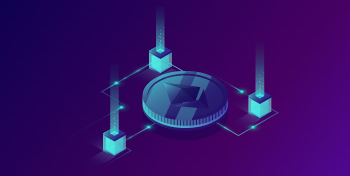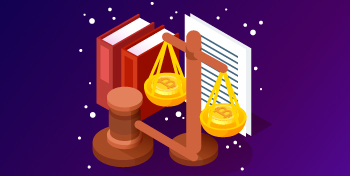Blockchain technology is essential in our daily lives, including supply chain management, automobiles, food, agriculture, and banking. But is blockchain technology ready for the challenges?
We need a fast and efficient payment network
One of the biggest applications of blockchain technology is cross – border payments. Bitcoin is the first cryptocurrency, and many people use it for cross-border payments to avoid government sanctions. For example, in Nigeria, people have recently used crypto to buy goods in China, because the national currency Naira fluctuates between banks and a parallel market.
The problem with BTC is that the transaction is often slow. It takes up to ten minutes to complete a bitcoin transaction, and fees are also high compared to other cryptocurrencies such as the XDC network and XRP. It has been proven that Ethereum cannot be suitable for cross-border transfers due to high gas fees during peak hours.
The dollar is mainly used for international cross-border transactions, and is still inefficient because many countries rely on America’s banks to complete transactions, even if the trade is not connected to the US. It concentrates power on them, and they control what happens in most countries. This means that they can prohibit certain countries from participating in world trade.
Blockchain is a decentralized system where everyone can control their transactions. But the argument for blockchain as a means of cross-border payments is still irrelevant if the transaction takes several minutes and the fees for them are extremely high. The blockchain should be an efficient and fast system with low fees, so that we can create a truly decentralized system for cross-border transactions.
Improved blockchain network
A suitable transaction with Blockchain technology must be truly decentralized, fast, and have low fees. Many blockchain projects do not meet all the criteria, but the project offers three characteristics of an excellent cross-border network. The project name is XinFin.
Xinfin offers high-speed cryptocurrency payment systems that simplify cross-border transactions within seconds: for example, cross-border payments and real-time settlements on the Tradefinex platform via the xdc XinFin network. XDC tokens allow you to transfer funds using DLT, with multiple synchronized registries and multiple processing nodes, reducing the risk of a single point of failure.
XDC community member Mr. Rushab Parmar of XinFin stated:
“Blockchain technology provides a cheaper option for a large number of people who are not covered by banking services to start using wallet technology without creating a physical Bank or installing an ATM. A pandemic like Covid19 has pushed up the use of wallets.
XinFin Network enables the mass use of technologies, providing almost zero Commission, transaction time of 2 seconds, and support for smart contracts provides features such as escrow or recurring micropayments with almost zero transaction fees”.
Conclusion
Blockchain can eliminate the dollar’s dominance in cross-border transactions, but its development can’t happen if blockchain transactions are slow and fees are high. A truly decentralized system that solves all these problems means that the blockchain can eliminate many problems by creating a truly decentralized system of cross-border payments.


